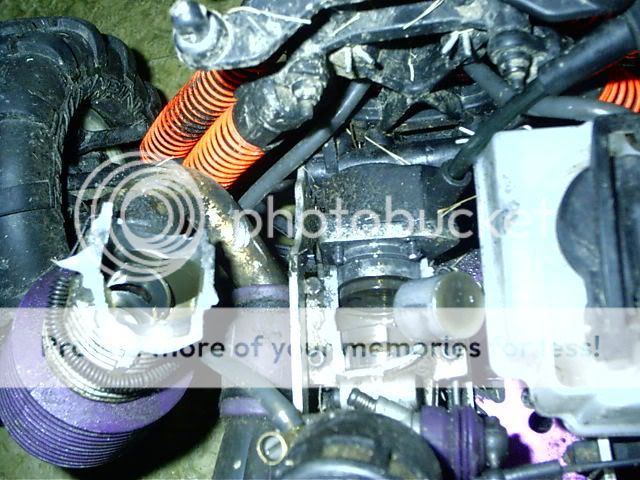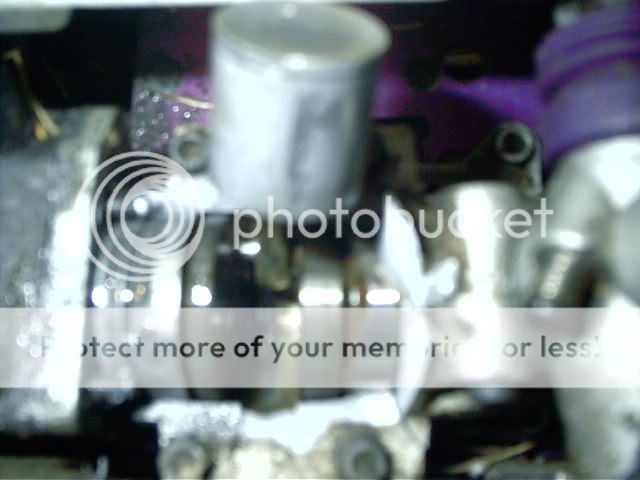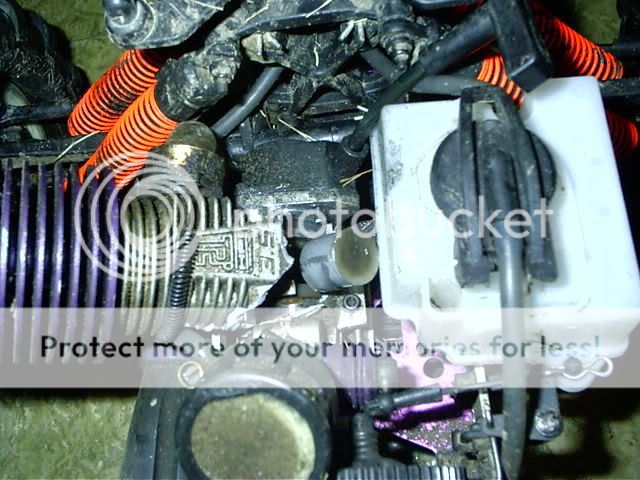AoD
Well-Known Member
- Messages
- 429
- Location
- Hammondsville, Ohio
Alright, another important thing to know with running your RC trucks around so much is how to tell if a motor is on it's last leg or not. Quite a few people in my local area who run RC cars and trucks have asked me this question. "How do I know if my motor is blown up, or getting ready to blow up?"
Well, this article will give you some quick tests to do to find out the answer to that question. And, I'll also add some information on what you can do after you find if you have a blown motor.
First, let's get to know our motors just a little. The way it works involves a heavy amount of physics. We won't go that far into detail in this guide, but we will see how it works.
Any piston driven engine works from compression. Most flammable substances such as fuels burn hotter and faster when compressed. This is the basis on how an engine works. Now, in your motor, there is a piston that goes up and down causing a crankshaft to turn.(which is attached to the piston by a connecting rod) The motion created is energy and the crankshaft turns the linear energy into rotational energy. This energy is transfered to a drivetrain which in turn, makes your wheels go around.
Now, when the piston moves up in the cylinder, it compresses the fuel. The fuel is then ignited by a spark plug (or a glow plug in an RC) which in turn pushes the piston downward. This is where the energy comes from. Now, the biggest factor is the compression. If the compression of the fuel is low, the fuel could only partially ignite, or not at all. So, compression means more to an engine then fuel or air. Without compression, an engine just wouldn't work.
Now that we know a little more about how the engine works, let's find out some ways to test the compression. First, no matter what you do, the most important thing is to keep dirt out of the engine. So, clean the motor as good as possible before ever taking out the glow plug. Make sure the motor is on the chassis for these two tests, and that there is fuel in the tank. If you do a dry compression test, you won't have any fuel assisting the piston and cylinder sealing as it would while running!
Now, for engines with pull starts, you have it really easy. The best way to check your motors compression is to just pull the cord. You must pull the cord slowly to test your compression. The motor should have some resistance, but slowly give a little. This shows that the motor has compression. The more it resists your pull, the more compression it has.
For electric starts, there is a little different method to testing compression. For this we must first take out the glow plug. Now, with the glow plug removed, (make sure you have a clean finger) cover the glow plug hole. Turn the motor over with your electric starter. A motor with good compression should actually blow your finger off of the hole. While a motor with a lower amount of compression may only push a little on your finger. Where a motor that has no compression will probably not even show any signs of pushing on your finger at all!
Now, if your motor shows no signs of compression, it's probably shot. Now, don't get in a scuffle over it, there's many new and exciting options opened up for you! New motors are always nice to have! Another cheaper alternative is a rebuild. Rebuilding an RC engine is a little difficult, but if you follow the right instructions, it can be done quickly and easily. Rebuilding one of these motors will also help you learn a lot more about how these motors work! I recommend rebuilding a motor for anyone who has that curiosity like I do. It's really a good way to learn a lot more about the dynamics of these engines!
One other way of testing your motor for serious compression loss. This method has always been looked at as a "bad" way of testing. But if you follow my directions, this will tell you exactly how bad your motor is. This works for both pull start and electric start motors, but requires the motor to be off of the model's chassis. Like before, make sure you clean that engine up before working on it.
See next post!
Well, this article will give you some quick tests to do to find out the answer to that question. And, I'll also add some information on what you can do after you find if you have a blown motor.
First, let's get to know our motors just a little. The way it works involves a heavy amount of physics. We won't go that far into detail in this guide, but we will see how it works.
Any piston driven engine works from compression. Most flammable substances such as fuels burn hotter and faster when compressed. This is the basis on how an engine works. Now, in your motor, there is a piston that goes up and down causing a crankshaft to turn.(which is attached to the piston by a connecting rod) The motion created is energy and the crankshaft turns the linear energy into rotational energy. This energy is transfered to a drivetrain which in turn, makes your wheels go around.
Now, when the piston moves up in the cylinder, it compresses the fuel. The fuel is then ignited by a spark plug (or a glow plug in an RC) which in turn pushes the piston downward. This is where the energy comes from. Now, the biggest factor is the compression. If the compression of the fuel is low, the fuel could only partially ignite, or not at all. So, compression means more to an engine then fuel or air. Without compression, an engine just wouldn't work.
Now that we know a little more about how the engine works, let's find out some ways to test the compression. First, no matter what you do, the most important thing is to keep dirt out of the engine. So, clean the motor as good as possible before ever taking out the glow plug. Make sure the motor is on the chassis for these two tests, and that there is fuel in the tank. If you do a dry compression test, you won't have any fuel assisting the piston and cylinder sealing as it would while running!
Now, for engines with pull starts, you have it really easy. The best way to check your motors compression is to just pull the cord. You must pull the cord slowly to test your compression. The motor should have some resistance, but slowly give a little. This shows that the motor has compression. The more it resists your pull, the more compression it has.
For electric starts, there is a little different method to testing compression. For this we must first take out the glow plug. Now, with the glow plug removed, (make sure you have a clean finger) cover the glow plug hole. Turn the motor over with your electric starter. A motor with good compression should actually blow your finger off of the hole. While a motor with a lower amount of compression may only push a little on your finger. Where a motor that has no compression will probably not even show any signs of pushing on your finger at all!
Now, if your motor shows no signs of compression, it's probably shot. Now, don't get in a scuffle over it, there's many new and exciting options opened up for you! New motors are always nice to have! Another cheaper alternative is a rebuild. Rebuilding an RC engine is a little difficult, but if you follow the right instructions, it can be done quickly and easily. Rebuilding one of these motors will also help you learn a lot more about how these motors work! I recommend rebuilding a motor for anyone who has that curiosity like I do. It's really a good way to learn a lot more about the dynamics of these engines!
One other way of testing your motor for serious compression loss. This method has always been looked at as a "bad" way of testing. But if you follow my directions, this will tell you exactly how bad your motor is. This works for both pull start and electric start motors, but requires the motor to be off of the model's chassis. Like before, make sure you clean that engine up before working on it.
See next post!





